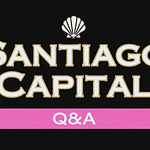In the autumn of 1971, finance ministers from across the globe gathered in a Rome conference room thick with cigarette smoke and barely contained fury.
The United States had just closed the gold window, severing the dollar’s last formal link to the metal that had anchored the post-war monetary order.
As accusations flew, Treasury Secretary John Connally leaned back in his chair and delivered a line that would echo for decades: “The dollar is our currency, but it is your problem.”
The room erupted.
Europe, Japan, and others could have walked away...designed a new system, revived a gold standard without Washington, or simply refused to play along.
But they did none of those things.
The dollar was indeed their problem, and solving it proved far harder than anyone imagined.
Fifty-four years later, that problem has not shrunk. It has metastasized into the single most indispensable feature of the global financial system.
And in 2025, despite a blistering gold rally, the dollar is not merely enduring...it is evolving.
The instrument of that evolution is the US-dollar stablecoin: a digital token pegged one-to-one to the dollar, backed by cash or short-term Treasuries, and capable of settling across borders in seconds for fractions of a penny.
Market capitalization of these instruments has surged past $600 billion. And ninety-nine percent of all stablecoins in existence are anchored to the USD.
What began as a niche crypto experiment has quietly become the most potent extension of American monetary power since the creation of the Eurodollar market in the 1950s.
Listen to this episode with a 7-day free trial
Subscribe to Santiago Capital to listen to this post and get 7 days of free access to the full post archives.









